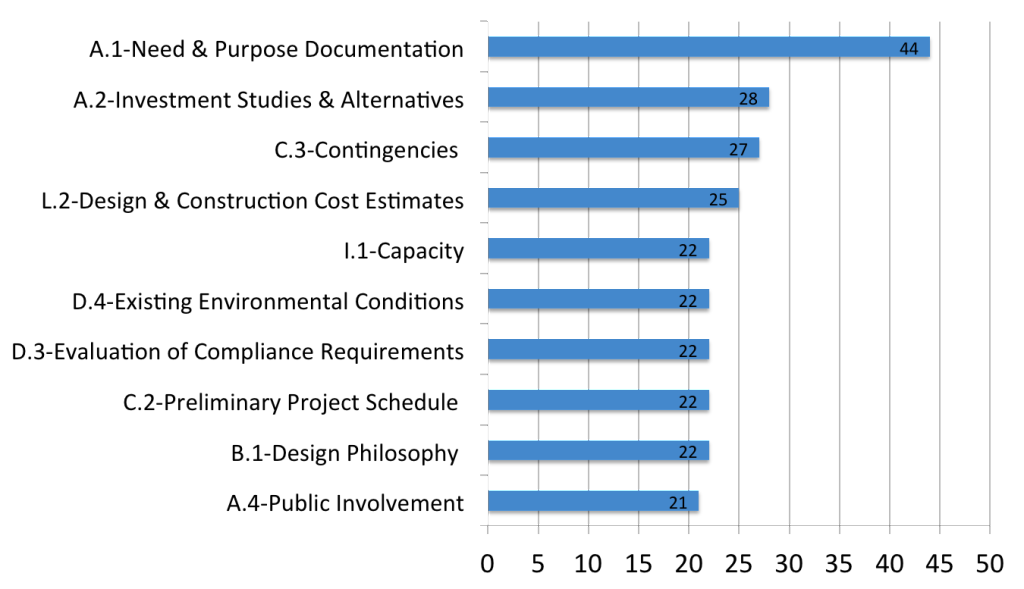Resource
PDRI for Infrastructure
Where is PDRI for Infrastructure used?
The PDRI for Infrastructure template is used to assess scope definition for projects that are linear in nature, cover a wide geographical area, and affect multiple jurisdictions and stakeholder groups.
Key Characteristics
| Characteristic | Infrastructure |
| Primary Designer | Architect |
| Project Orientation | Horizontal |
| System | Vector |
| Utilization | Conveyance |
| Operational | Flow dynamics & networked grid |
| Interact with Public | Extensive |
| Environmental Impact | Extensive |
| Primary Cost | Earthwork, materials associated with structures |
| Installed Equipment Cost | Minimal |
| Land Cost | Moderate to high |
| Jurisdiction Interface | Extensive |
Types of Projects
| Power or Communication Transmission Lines | Pipeline/Pumping Stations | Tunnels |
| Navigation locks | Highways | Canals |
| Electrical distribution/transmission | Dams or Levees | Rails |
| Airport runways | Telecommunications | Marine or Air Terminals |
Project Performance Impact
Application of the PDRI for Infrastructure template has been tested by the Construction Industry Institute (CII) on billions of dollars worth of infrastructure projects. These projects included tunnels, security perimeters, pipelines, wharfs, electrical distribution, airport runways and taxiways, and roadways.
The table below compares project performance using their PDRI score at the time of project authorization (end of detailed scope). Projects with a PDRI score under 200 (a lower score indicates a better defined scope) consistently outperform projects with a PDRI score above 200 in terms of cost, schedule, and change orders.
| Performance | PDRI Score < 200 | PDRI Score > 200 | Difference |
| Cost | 5% below budget | 25% above budged | 30% |
| Schedule | 13% behind schedule | 30% behind schedule | 17% |
| Change Orders | 3% of budget | 10% of budget | 7% |
Reference: Project Definition Rating Index Infrastructure Projects, Implementation Resources 268-2, Version 4.0, Construction Industry Institute, 2013.
Top Ten Elements

